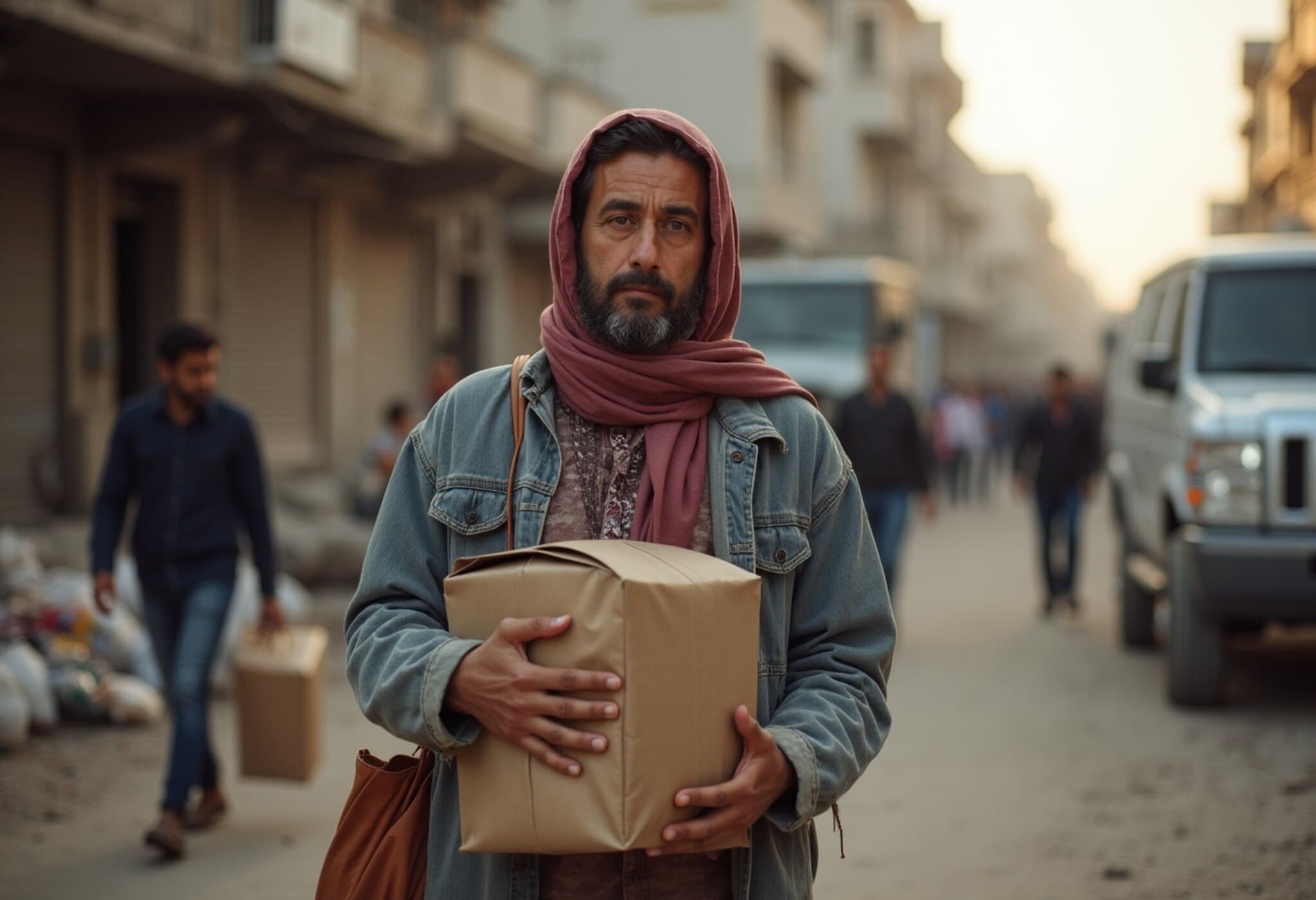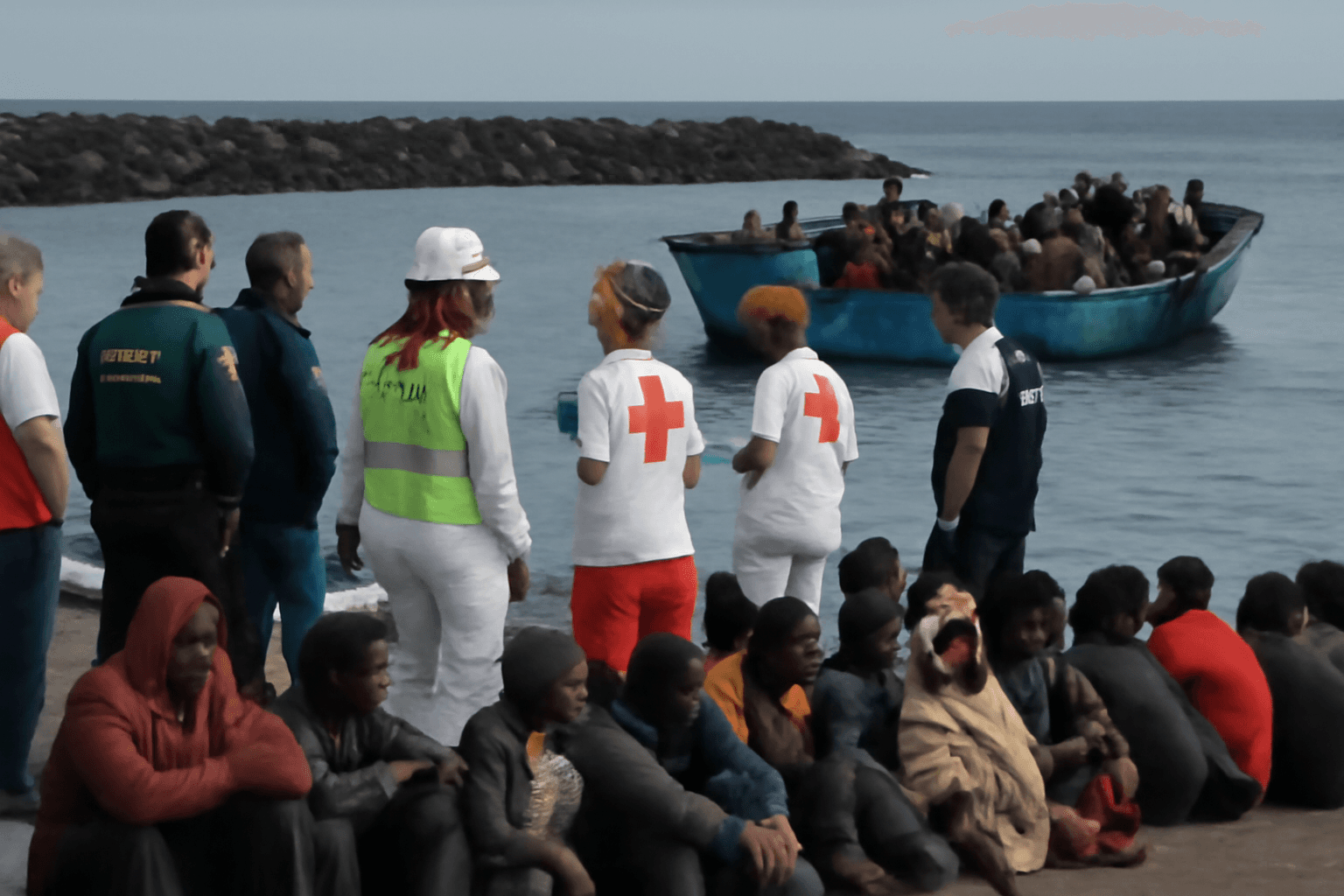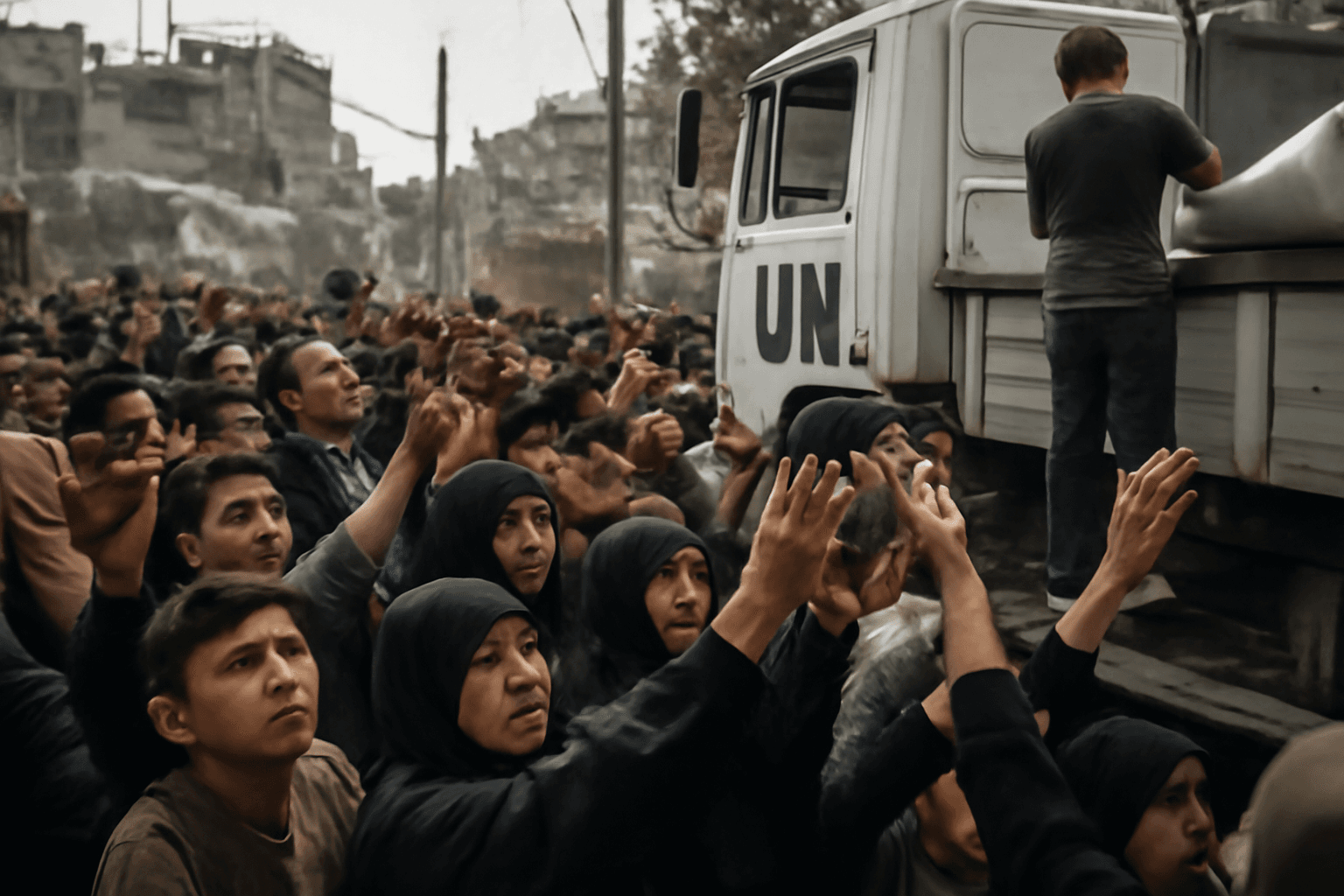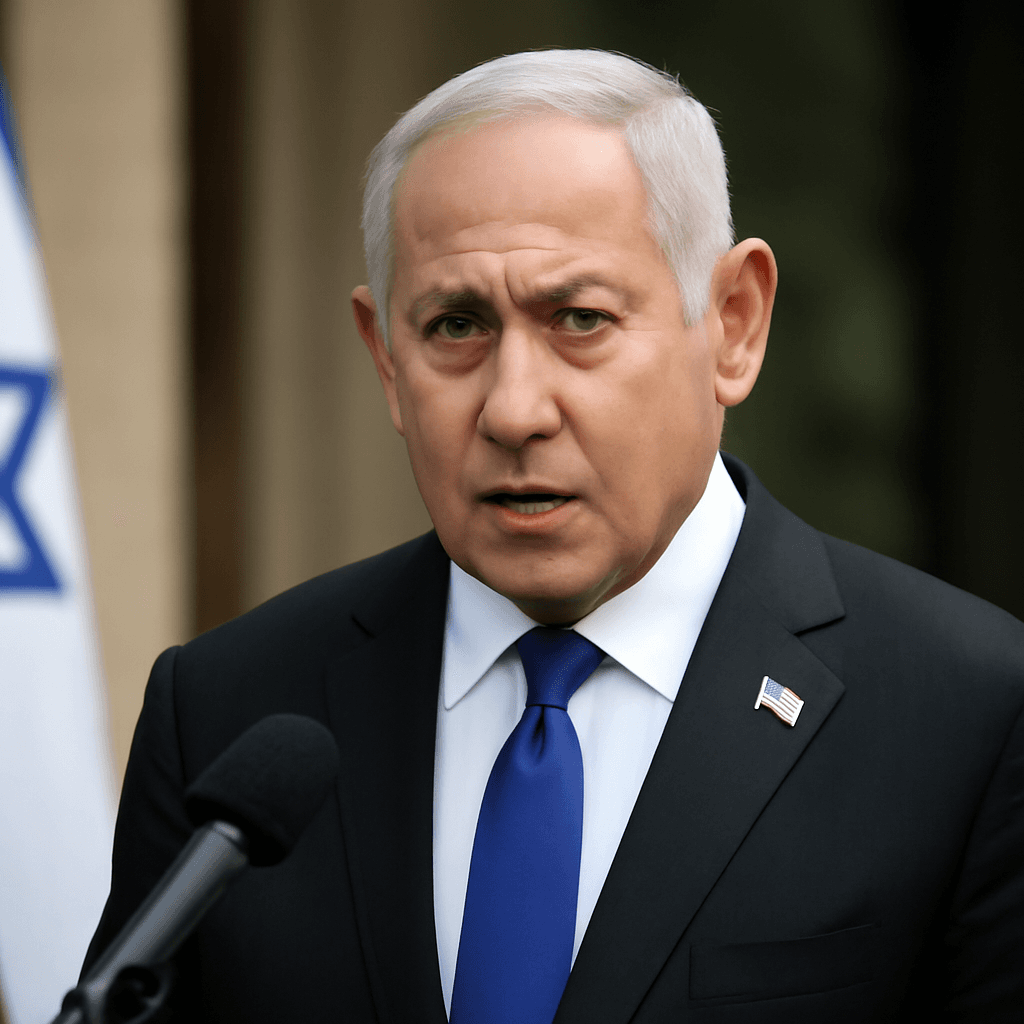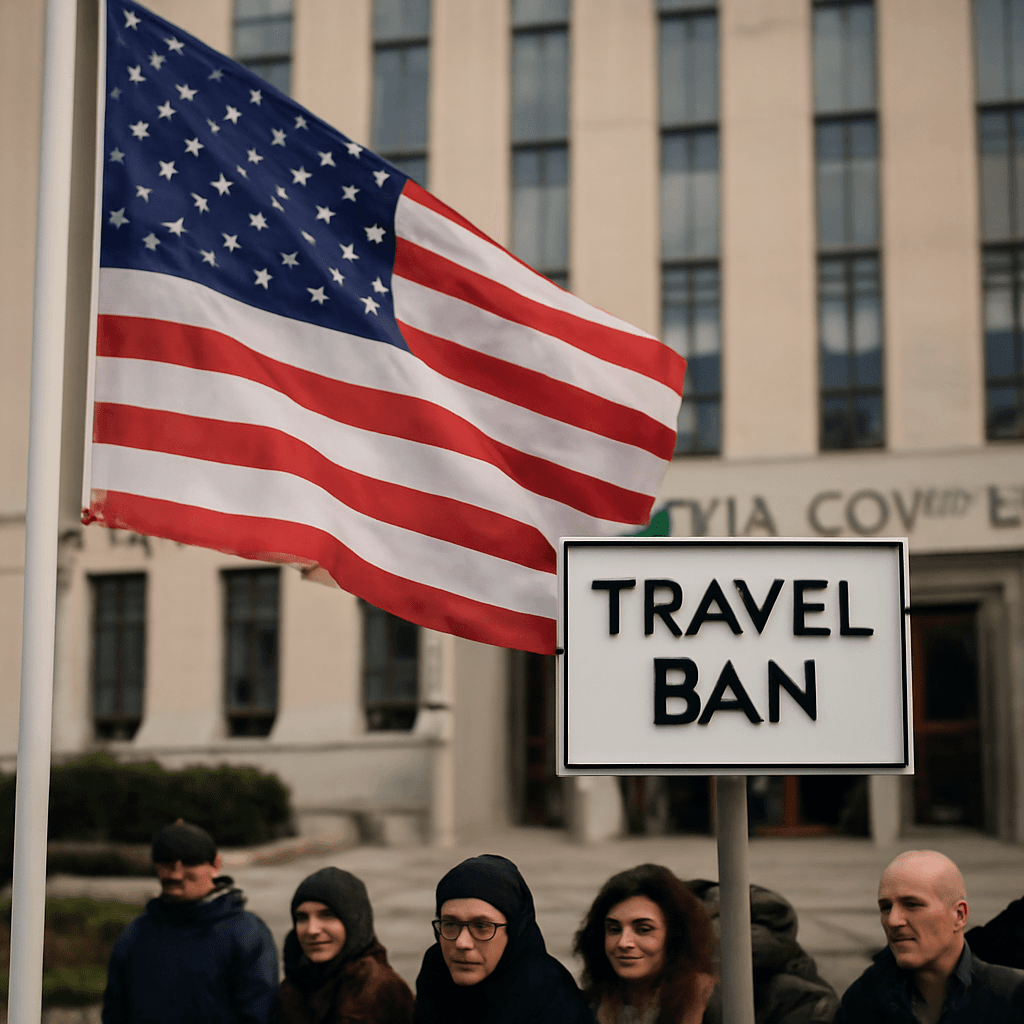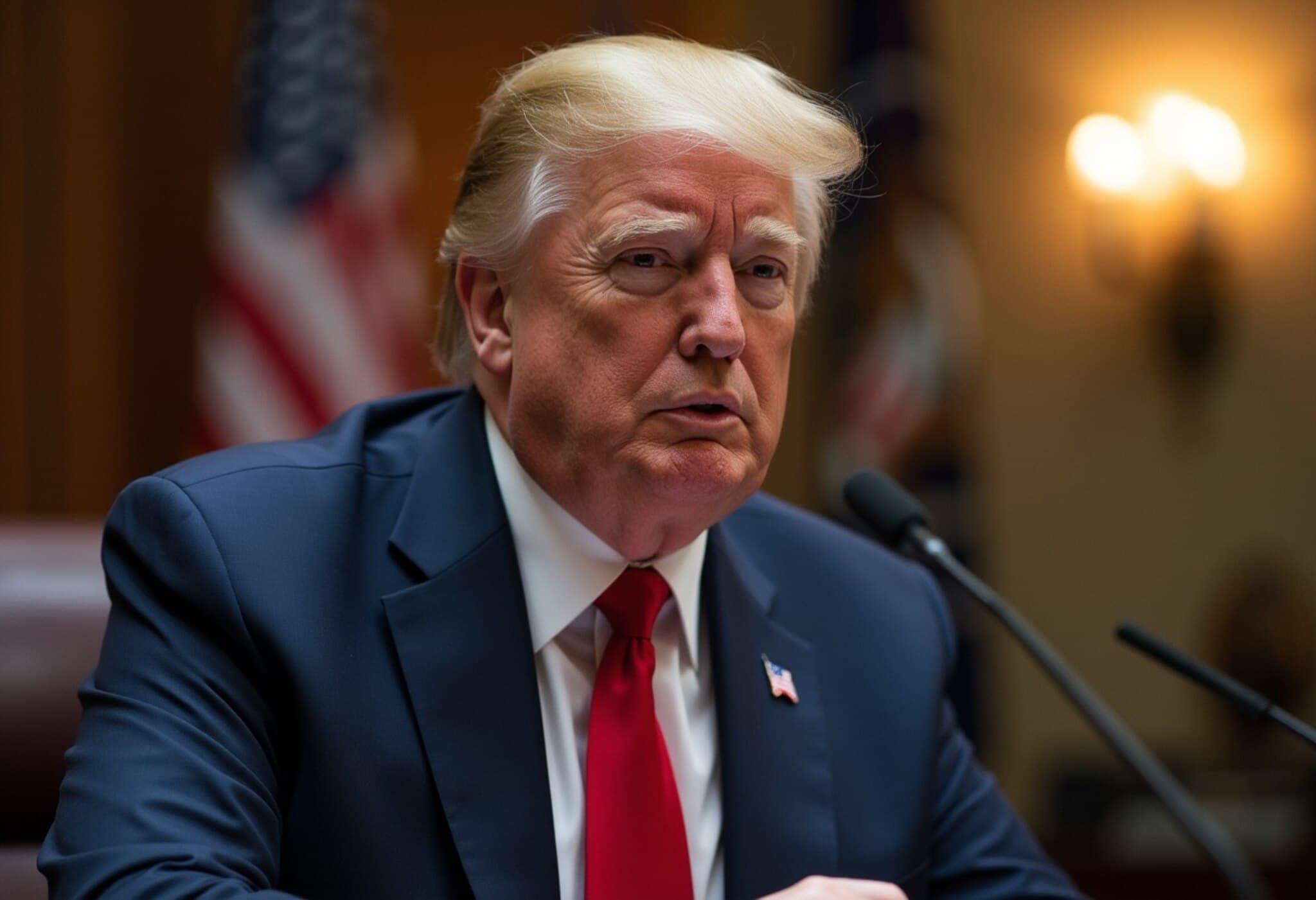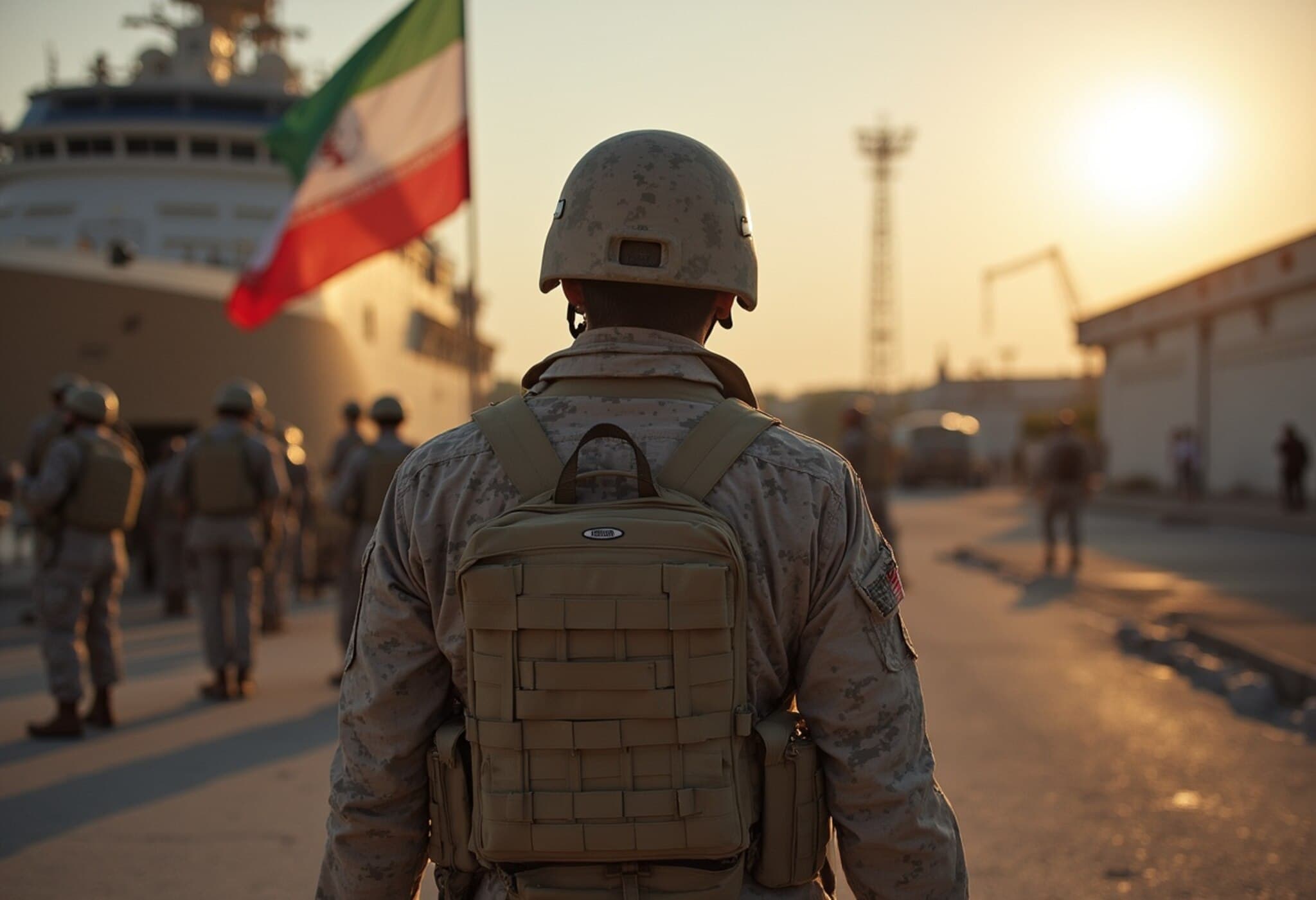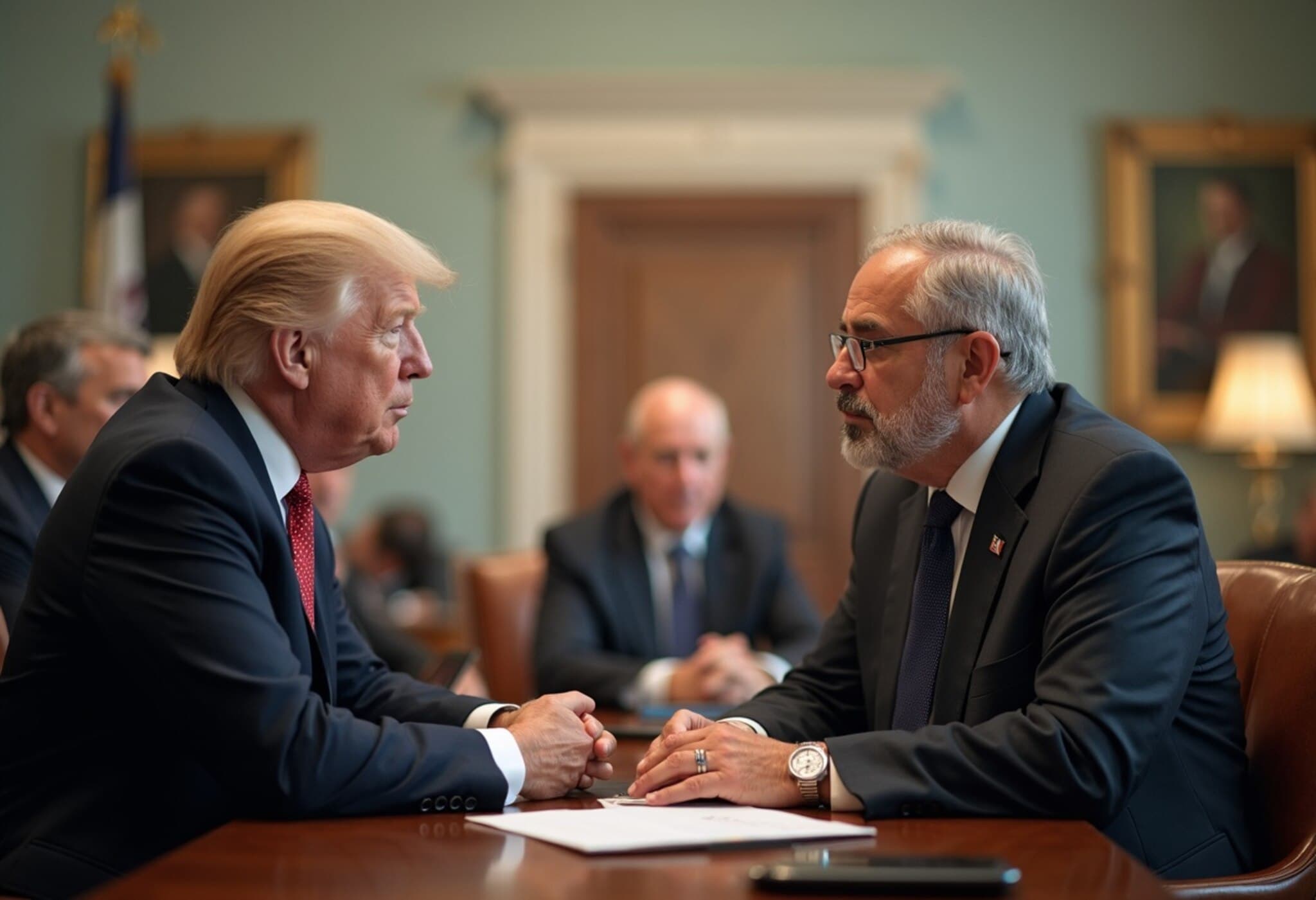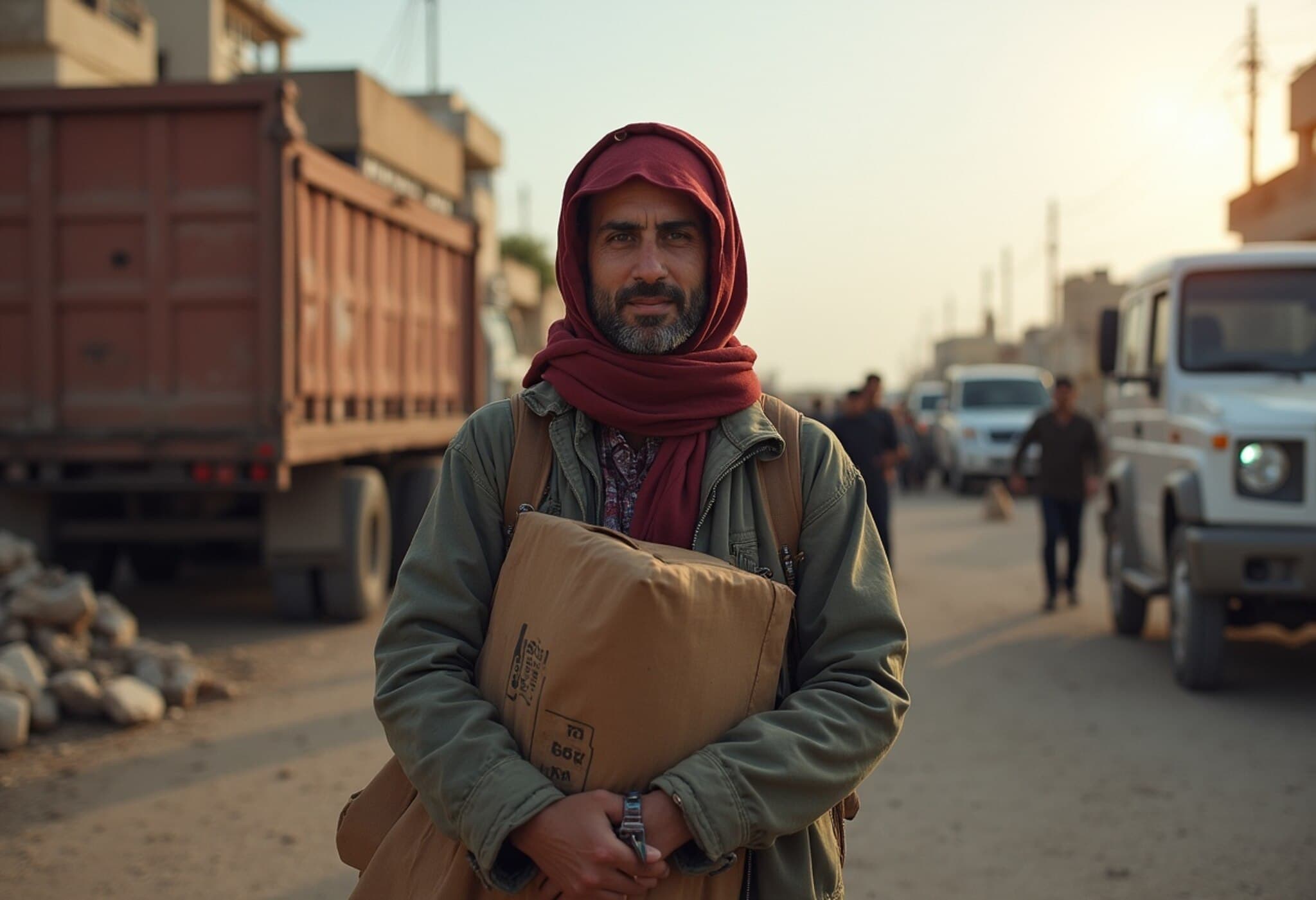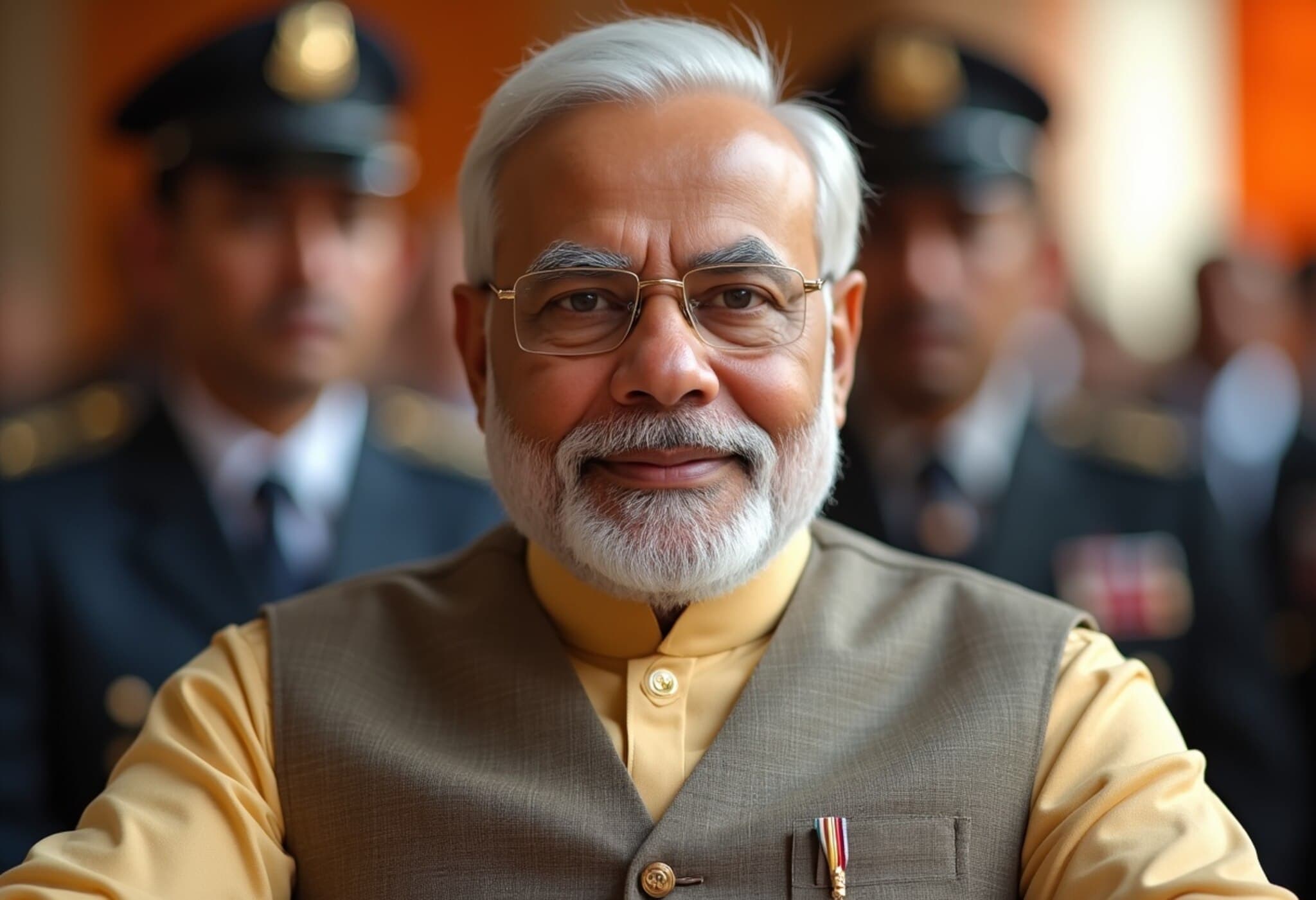Black Market Trade Emerges Amid Humanitarian Crisis in Gaza
As the Gaza Strip endures one of its most severe humanitarian crises in recent memory, a deeply troubling paradox has surfaced: aid meant to alleviate widespread hunger is increasingly fueling a burgeoning black market ecosystem. With essential food items like rice being sold at prices up to 15 times higher than before the conflict, many Palestinians face impossible dilemmas between starvation and exploitation.
High Risk, High Cost: Navigating Aid Distribution Under Extreme Danger
Since May, the Gaza Humanitarian Foundation (GHF), a United States-backed organization, has maintained tightly controlled aid distribution points in southern Gaza under stringent Israeli military oversight and protection by American private security contractors. While these sites theoretically provide critical relief, they have also become sites of peril—more than 500 people, including children, have died attempting to access these aid centers.
Israel’s military asserts that its forces have used lethal force only in response to perceived threats near the aid points, but the death toll underscores grave risks Palestinians take just to secure basic sustenance.
The Harsh Economics of Survival
The urgent and deadly conditions around the aid centers have laid the groundwork for a ruthless black market. Ayed Abu Ramadan, head of Gaza’s Chamber of Commerce, observes that those physically able to carry large quantities of aid supplies—like vegetable oil—sell them at inflated prices. Items originally valued modestly cost anywhere from 5 to 10 times more when resold, creating a feedback loop of scarcity and profiteering amid suffering.
Firsthand Accounts: Aid Items Disguised in Market Stalls
Save the Children’s humanitarian director for Gaza, Rachael Cummings, recounts seeing GHF-branded aid products in market stalls across Khan Younis. Potatoes, tahini, flour, and other staples distributed for free are commonly resold. Mohammad Farra, a Gaza father, paid 250 shekels ($75) for a 5-kilogram bag of potatoes—over fifteen times the pre-war price—remarking that these items openly bear the "American foundation" label.
Official Responses and Unintended Consequences
The GHF categorically denies authorizing resale, emphasizing that all aid is intended to be free. However, the foundation acknowledges the difficulty in controlling what happens once aid enters Gaza’s complex and constrained marketplace.
In an attempt to adapt, the GHF recently piloted a program distributing food parcels directly to merchants—on condition they distribute freely but were reportedly allowed to sell a portion as compensation. This proposition was met with mixed reactions, revealing ethical and practical tensions within the aid delivery system. Nahed Shohaybr, leader of Gaza’s transport sector association, declined such arrangements, underscoring the moral quandaries faced by local actors.
A System Under Scrutiny: Humanitarian Aid or Coerced Choice?
Proponents of the GHF mechanism, including some Israeli and American officials, defend it as a means to prevent Hamas from diverting aid and to maintain strict accountability. However, critics argue this control forces Palestinians into a bleak zero-sum game: navigate dangerous checkpoints and risk gunfire, or pay exorbitant prices for essential goods on the black market.
Over 160 aid organizations recently condemned the current framework, asserting it subjects Palestinians to starvation or lethal danger. University student Osama Saber epitomizes this dilemma — he avoids risky trips to aid sites and instead buys overpriced humanitarian products in local markets, stating, "We’re buying aid for cash at many times its normal price." This harsh reality blurs the line between relief and exploitation.
Expert Perspective: A Crisis of Distribution and Dignity
Experts familiar with humanitarian logistics emphasize that while preventing militant groups from accessing aid is crucial, excessively militarized and restrictive delivery methods can inadvertently worsen civilian hardship. Dr. Leila Haddad, a Middle East policy analyst, highlights, "When aid comes wrapped in layers of control and danger, it undermines trust and pushes the most vulnerable toward desperate choices. Sustainable relief requires not just supplies but safe, dignified access."
This situation in Gaza exemplifies how geopolitical conflicts complicate humanitarian efforts, raising urgent questions about balancing security and humanity.
Looking Ahead: What Can Be Done?
- Expanding neutral, community-managed distribution channels to reduce deadly bottlenecks.
- International monitoring to ensure transparency without compromising safety.
- Enhanced diplomatic efforts to ease blockade restrictions and enable broader aid access.
- Long-term investments in local food systems to reduce dependency on volatile aid flows.
Editor’s Note
The unfolding humanitarian crisis in Gaza challenges the very foundations of aid delivery in conflict zones. The tragic deaths around aid convoys reflect a system under immense strain, while the soaring prices in black markets reveal a profound moral and logistical failure. Readers should consider: How can the international community better balance counterterrorism concerns with the imperative to protect innocent civilians? And what lessons can be applied globally to ensure aid reaches those in need without becoming part of a ruthless survival economy?

